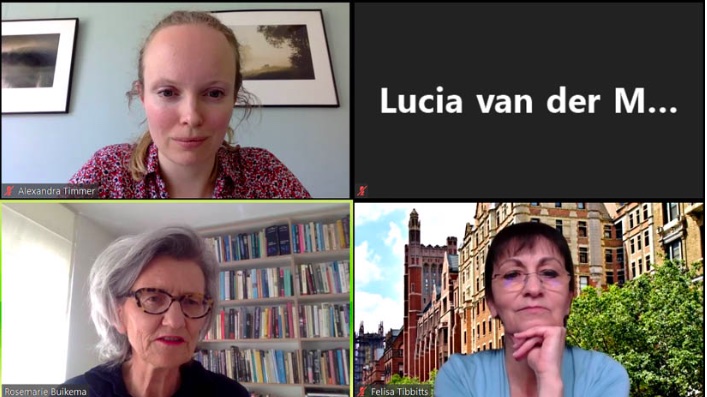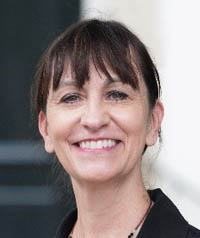
Felisa Tibbitts
Netherlands Institute of Human Rights (SIM), Utrecht University, The Netherlands
f.l.tibbitts@uu.nl
Some years ago, when teaching a human rights course at Harvard’s Kennedy School of Government, I noticed that the composition of my students was overwhelmingly female. I made a mental note of this and began asking colleagues who were teaching human rights in other higher education institutions about the gender balance in their classrooms. It was the same story: mostly women.
A Columbia University graduate student, Laura Osterndorf, and I decided to explore this phenomenon by collecting data on the percentage of women in three transnational and well-established human rights organizations. We selected the Office of the UN High Commissioner for Human Rights, National Human Rights Institutions and Amnesty International as these represented well established governmental and non-governmental actors, were operating transnationally and could provide us with data. We also wanted to explore the seniority of women in these organizations. This seemed like a good first step in empirically answering the question about the ‘feminization of human rights’ from an employment perspective.
Background on the Feminization of Work
A little bit of background on the feminization of work. Careers that have been feminized are education, nursing, social work, philanthropy, and the public and non-profit sectors (Cortina & San Roman, 2006; Lanfranchi & Narcy, 2013). These are sometimes known as the ‘caring’ professions. Although one can equate women’s employment in the formal sector with empowerment, the feminization of any industry (>60% women) can have negative implications for that occupation (Elias, 2007). There may be male-female wage gaps, where feminized careers receive generally lower compensation (Ball, 2018; Hegewisch & Baron, 2018). Once women are admitted into professions previously dominated by men, they have less likelihood of advancing to the highest positions (Kelleher, 2011). Regardless of how feminized a profession is, researchers have noted that women often face barriers to promotion competing against their male colleagues.
Women’s Employment in Human Rights Organizations
Surprisingly, in the organizations that we studied, only Amnesty International (AI) showed a predominantly female composition. Amnesty International is a global movement with more than 7 million members and national sections in over 70 countries. For the 11 countries that data was provided for, an average of 67% of the staff were women. However, at the country level, this ranged from a low of 29% in Russia to a high of 81% in Lebanon. In terms of the women’s presence in top management, the percentage of 65% was nearly on par with the average proportion of women across the organization; however, women were overrepresented in lower level administrative jobs (79%) and underrepresented in mid-level professional positions.
National Human Rights Institutions (NHRIs) or Equality Commissions have a presence in 148 countries. These are independent institutions given the responsibility to protect, monitor and promote human rights in a given country. For the 84 NHRI analyzed, a substantial number (43%) had a majority of female staff. However, as we saw with Amnesty, there were stark variations within and across regions. The Americas were highly variable, from 35% female in Mexico to 83% in Uruguay. In Europe/Central Asia there was a low of 17% (Azerbaijan) to 100% (Croatia). In Africa only one NHRI (Zimbabwe) had a majority female staff at the time the data was collected.
The Office of the UN High Commissioner for Human Rights (OHCHR) is the leading UN entity on human rights. The OHCHR is headquartered in Geneva and has an office in New York and field presences in different regions and countries. As a UN agency, gender-balance is mandated and discrimination is forbidden in hiring and promotion policies; there is a United Nations System-wide Action Plan for Mainstreaming Gender Equality and the Empowerment of Women. For the 949 employees for whom statistics were available, OHCHR is considered to be “approaching equal representation of women” within the defined 47% to 53% margin, though there is an overrepresentation of women in headquarters and an underrepresentation in field offices. The OHCHR is still aiming for gender parity at the upper echelon of management.
These statistics thus show that gender balance in employment is close to being achieved within the OHCHR and for nearly half of the NHRIs, with ‘feminization’ through female labor rates apparent only for Amnesty International. This made me wonder about the civil society versus government sector engagement in human rights. Other questions also continued to percolate.
Virtual Panel Discussion at Utrecht University
In order to bring in more perspectives, a virtual panel exploring the question “Feminization of Human Rights?” took place 29 May 2020. This event was jointly organized by the Netherlands Institute of Human Rights (SIM) and the Gender and Diversity Hub of Utrecht University. Prof. Alexandra Timmer, a specialist in non-discrimination law, moderated and participants included Prof. Rosemarie Buikema, Prof of Art, Culture and Diversity and myself.
I shared my findings from Amnesty, NHRIs and the OHCHR. Prof. Timmer shared 2015 GQUAL data that showed a continued underrepresentation of women in international and regional courts and tribunals. In other words, contrary to the cross-national statistics from Amnesty International, the OHCHR and most NHRIs, these law-making institutions remained overwhelmingly male dominated in staffing.
This raised a question from Prof. Buikema about the different kinds of organizations and roles one can find within the human rights profession, and whether we might expect to find more women in the roles that might be seen as more ‘caring’. A participant pointed out that there may be many more people – in particular, women – engaged in human rights work that is not captured in statistics such as the kind Laura and I captured: volunteerism. Might we find many (more) women engaged in unpaid human rights work? A wider frame question brought to light by a participant in the discussion, Prof. Lorena Sosa, is the limitation of viewing human rights work itself from an institutional perspective. What about the role of social movements in human rights work?
At the conclusion of the webinar, I felt that we did not yet have a simple answer to the question of whether a feminization of human rights is taking place. However, important areas have been uncovered for further research. What are the longer-term trends in women’s employment within different types of organizations in the human rights field, and how might we take salary levels into account? How can we account for national and regional variations in women’s representation, and what accounts for the persistence of male dominance in the staffing of human rights courts?
Many questions remain to be pondered on and to research from an interdisciplinary lens. In the meantime, human rights work – and women’s role in it – will continue to move ahead following its own currents.
Note: The recording of the webinar “Feminization of Human Rights?” can be found on the SIM website.
Bio

Felisa Tibbitts is UNESCO Chair in Human Rights and Higher Education and Chair in Human Rights Education at the Human Rights Centre of Utrecht University (Netherlands). She is also a Visiting Professor at Nelson Mandela University (South Africa) and lecturer in the Comparative and International Education Program at Teachers College of Columbia University. Her research and policy interests include peace, human rights and global citizenship education; curriculum policy and reform; critical pedagogy; and human rights and higher education transformation.